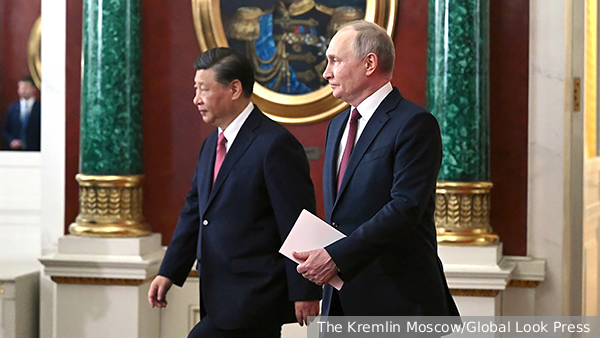
Russia and China: an economic partnership that could shake the world
The Russian President Vladimir Putin's visit to China, which is taking place onr 16-17 May, coincides with a period of growing bilateral relations between Russia and China. The most significant developments in bilateral relations are occurring at the regional level. It is also worth noting that many Russian regions, including the North, Centre, West and South, previously had limited cooperation with China due to their established ties with Western countries. However, at present, these contacts are at a standstill, which has prompted the regions to seek opportunities to work with China.
Some regions have already made significant progress, while others are just beginning to explore this avenue. There are already a number of notable examples and projects in place, including a grain terminal in the Trans-Baikal Territory, a rapeseed project in the Republic of Buryatia, and plans by Chinese industrialists to commence operations in Yakutia. The Irkutsk, Orenburg, and Tula regions have demonstrated significant success, and there are numerous other examples of this. The projects are diverse, encompassing industry, agriculture, and tourism.
However, there are also areas of concern. Firstly, it is important to highlight the lack of success in investment cooperation, which has been further hindered by the increasing sanctions pressure. This has led to a reduction in the number of potential investors. Here, objective and subjective factors converge. The issue is complex and multi-faceted, but it must be resolved. In general, there are a number of potential avenues for consideration. RASPP already has seven representative offices and its own trading house in China, which allows us to minimise many difficulties.
Following the visit of the head of state to China, I anticipate that significant progress will be made on the Power of Siberia – 2 gas pipeline. There has been a dearth of concrete information on this project for some time, which has given rise to rumours and speculation. This has not created a particularly positive backdrop for bilateral cooperation. To resolve the payment issues, it is necessary to find a solution at the highest level, and both parties are interested in this. Another issue is that this is a highly technical topic that requires in-depth study. Furthermore, it is unlikely that the details of the agreements will be available to the general public. This is the reality.
With regard to logistics, we can anticipate further information on the proposed bridge across the Amur, which, according to the latest plans, will be a railway-road bridge, offering greater functionality than the Blagoveshchensk-Heihe bridge.
In my opinion, production issues can be resolved locally. If suitable projects are presented to Chinese partners, there will always be those interested. It is no coincidence that we are now seeing regular visits of Chinese delegations to the Russian Federation at the city and provincial level. Chinese partners are awaiting proposals of interest and are open to collaboration.
In terms of global prospects, it seems that Russia and China are now at the forefront of building a truly multipolar world, primarily in economic terms. We are witnessing the consequences of the previous economic model, which was based on the dominance of the dollar and the West as a whole.
It is important to note two key points. Firstly, economic cooperation between Moscow and Beijing is developing despite the imposition of severe sanctions. In fact, it is developing "immunity". A range of protected mechanisms for cooperation are being established in all areas, which can then be offered to other states.
Secondly, I would like to remind you that Russia and China cooperate not only in a bilateral format, but also on the BRICS and SCO platforms.
These are comparable to the G7 in terms of the degree of influence, number of areas of interaction and other characteristics. It is no coincidence that so many states are interested primarily in BRICS. These formats represents the future of the global economy.
